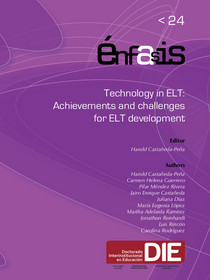
The 51st ASOCOPI conference held in Bogota in October 2016 gathered professionals from all over Colombia and the world around the topic of technology in the ELT classroom. It was a vibrant event where themes such as gaming, research, differentiation, blended learning, flipped learning, platforms, collaborative learning, and innovation were featured by speakers from different educational contexts. As one of the main purposes of the conference was to inspire Colombian language teachers to use technology purposefully in their classrooms, the authors of the present chapter led a session on in-class flip; an innovative approach towards flipped learning for particular contexts, the Colombian setting being one of them. This chapter presents the experience of training teachers to create their own in-class flips by means of experiencing one, what is known as loop input (Woodward, 1988). It also outlines the main stages of an in-class flip for teachers who think a regular flipped setting does not apply to their contexts, learners or conditions. Moreover, it suggests loop input as an effective way to train language educators for situated learning to occur.
In that sense, loop input allowed the authors to deliver a practical and experiential session for preservice and in-service teachers not only to learn about a teaching strategy, but for them to see its real value for their own teaching situations. The session promoted situated learning, “within a context that [resembled] as closely as possible the practice environment” (Stein, 1998, para. 6), where students (in this case, ELT teachers) transfer learning to real- life situations through “immersion in and with the experience.” (para. 5).
Since the authors started to flip, the concepts of time, assessment, content, as well as teacher and student roles in learning have been altered, optimizing the teaching and learning resources and processes. Consequently, direct instruction has lost its protagonism in their classrooms, and is being accessed by students through different means, whether in the individual space at home, or in stations or other means within the classroom walls. Just the same, their classrooms have been transformed “into a dynamic, interactive learning environments where the educator guides students as they apply concepts and engage creatively in the subject matter.” (FLN, 2014, para. 1).
Published the

Redes Sociales DIE-UD